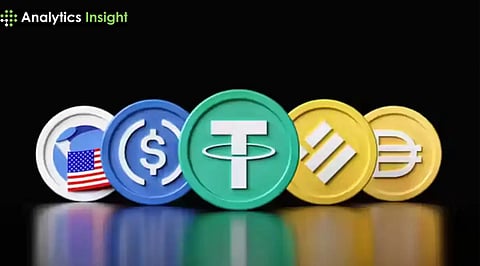

Federal Reserve Governor Stephen Miran believes the fast-rising demand for dollar-linked stablecoins may soon ripple into monetary policy. Speaking at the BCVC Summit in New York, Miran said that these tokens could be quietly tugging the “neutral rate” lower - the rate that keeps the economy steady without fueling or stalling growth.
He explained that if the neutral rate continues to slide, the central bank would likely follow with lower interest rates. The comment connected the expanding digital-asset world to how borrowing costs might evolve in the years ahead.
Data from CoinGecko places the combined value of stablecoins at around $310.7 million. Miran pointed to internal Federal Reserve research suggesting that figure could rise sharply - possibly reaching $3 trillion within five years.
“Stablecoins may become a multitrillion-dollar elephant in the room for central bankers,” he told the audience. These tokens, he added, have already boosted demand for US Treasury bills and other highly liquid dollar assets, much of it coming from investors abroad.
That appetite, he said, can influence the cost of money. Earlier Fed analysis estimated that such growth might trim the benchmark rate by about four-tenths of a percentage point.
Miran, appointed under former President Donald Trump, has long favored a looser stance on interest rates. He argues that the true neutral rate sits lower than most of his colleagues assume. His latest remarks bring digital finance into that debate, hinting that the rise of stablecoins could keep borrowing costs subdued for years.
He explained that when stablecoins circulate widely, they expand the overall pool of loanable funds, naturally pressing down on equilibrium rates. “If neutral is lower, policy rates should also be lower,” he said. Otherwise, the central bank risks tightening the economy unnecessarily.
Global agencies such as the International Monetary Fund have warned that stablecoins may compete with banks by offering alternative places for savings. In the US, banking associations have asked Congress to strengthen rules around stablecoins that pay yield, fearing they could drain traditional deposits.
Miran, whose tenure ends in January, acknowledged that new technology brings new vulnerabilities. He mentioned the chance of market disruptions if funds move quickly between banks and stablecoin issuers during stress periods.
He also cited the GENIUS Act, which blocks yield payments and narrows acceptable reserve assets, saying such limits reduce the risk of capital flight from banks. Most stablecoin use, he predicted, will likely come from savers in developing economies who want dollar stability but lack access to US banking channels.
“Stablecoins help these individuals enjoy the benefits of dollar stability without depending on fragile local systems,” he said. Yet he added that easy dollar access can create “fault lines” when markets shake.
Still, Miran described stablecoins as part of a broader modernization of the nation’s financial plumbing. “America’s capital markets remain the world’s deepest,” he said. “But our financial infrastructure could use a reboot - and stablecoins may lead the way.”
Read More: Treasury Faces Industry Divide on Stablecoin Interest Rules in GENIUS Act
Stephen Miran’s remarks connect stablecoin growth with future shifts in US interest rates. As demand for dollar-backed tokens rises, their influence on liquidity and monetary policy could reshape global finance, signaling a new era for digitally driven economic balance.
